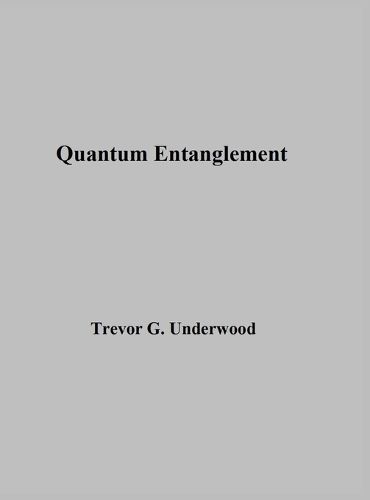Readings Newsletter
Become a Readings Member to make your shopping experience even easier.
Sign in or sign up for free!
You’re not far away from qualifying for FREE standard shipping within Australia
You’ve qualified for FREE standard shipping within Australia
The cart is loading…






In my last book, "Electricity & Magnetism", two conclusions stood out; the rotary nature of magnetism compared with the linear translation of electricity; and the dependence of ferromagnetism on entanglement of electrons with the same quantum spin states. This book takes a closer look at quantum entanglement. Entanglement occurs between valence electrons with the same quantum spin states creating non-polar (valence) bonds. Entanglement also occurs between electrons with the same quantum spin states in materials in a magnetic field, creating various types of magnetism depending on the structure of the atomic lattice of the material. It has also been demonstrated that quantum entanglement occurs at a distance between electrons, photons, top quarks, and molecules. Part I describes the development of the current theory of the spin of the electron. Part II describes the development of the theory of how entanglement between electrons with the same quantum spin states result in exchange interaction. Part III addresses the quantum theory of the susceptibility of materials to a magnetic field and the resulting types of magnetism. Part IV describes quantum entanglement at a distance between electrons and other particles with the same quantum spin states.
$9.00 standard shipping within Australia
FREE standard shipping within Australia for orders over $100.00
Express & International shipping calculated at checkout
In my last book, "Electricity & Magnetism", two conclusions stood out; the rotary nature of magnetism compared with the linear translation of electricity; and the dependence of ferromagnetism on entanglement of electrons with the same quantum spin states. This book takes a closer look at quantum entanglement. Entanglement occurs between valence electrons with the same quantum spin states creating non-polar (valence) bonds. Entanglement also occurs between electrons with the same quantum spin states in materials in a magnetic field, creating various types of magnetism depending on the structure of the atomic lattice of the material. It has also been demonstrated that quantum entanglement occurs at a distance between electrons, photons, top quarks, and molecules. Part I describes the development of the current theory of the spin of the electron. Part II describes the development of the theory of how entanglement between electrons with the same quantum spin states result in exchange interaction. Part III addresses the quantum theory of the susceptibility of materials to a magnetic field and the resulting types of magnetism. Part IV describes quantum entanglement at a distance between electrons and other particles with the same quantum spin states.